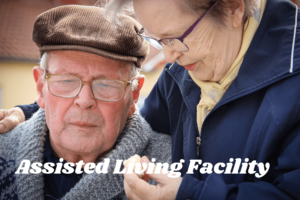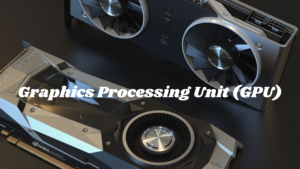Electroconvulsive Therapy (ECT) – A Quick Relief Treatment
father was suffering from severe depression. He had suicidal symptoms and he
refused to eat. She took him to a nearby hospital where doctors decided to give
him Electroconvulsive Therapy (ECT). This treatment is also referred to as
shock therapy or Electroshock Therapy.
Meaning
of ECT – Let’s Define it
Electroconvulsive
Therapy or ECT is a type of psychiatric treatment where a brief seizure is
performed using electric stimulation. This treatment is commonly used for the
treatment of depression, bipolar disorder and psychosis.
Meriam
Webster dictionary defines the term as electroshock therapy saying it is the
treatment of mental illness, particularly depression where an electric current
is applied to the head of a patient under anesthesia, to induce unconsciousness
and brief seizures in the brain.
Oxford
Advanced Learner’s Dictionary shows brevity while defining it, saying ECT is a
treatment for mental illnesses that are serious in nature. In this treatment
electric current is passed through the brain.
Origin
of Electroconvulsive Therapy (ECT)
Electroconvulsive
Therapy or ECT was developed in Italy in 1938 to treat catatonia and depression
and soon became a popular treatment for mental disorders worldwide. Later
anesthesia was added as a part of the treatment.
Electroconvulsive
Therapy (ECT) in the United States
Electroconvulsive
Therapy (ECT) was first launched in America in 1938 and by 1941 most of the
medical institutions in the United States adopted it.
Types
of Electroconvulsive Therapy (ECT)
As
we have a brief idea about electroshock therapy, it is time to move forwards
and know its types. ECT is of two types.
Bilateral
ECT
Bilateral
ECT is a kind of electroconvulsive therapy that is performed by placing
electrodes on both sides of the scalp. Such a therapy affects the entire brain.
Unilateral
ECT
In
unilateral therapy, current passes through only one side of the brain. The
therapist puts electrodes on top of the head and another on the temple,
preferably on the right side of the brain.
Diseases
in which ECT or Electroshock Therapy is Applicable
A
doctor takes a call on performing electroconvulsive therapy or ECT when the
patient stops responding to medication and psychotherapy. Patients with severe
symptoms and suicidal tendencies are also given electroshock therapy.
Aggressive
Behavior in Dementia
People
who are not responding to medication during dementia and showing aggressive
behavior are treated with electroshock therapy. ECT has been found effective in
dealing with the symptoms.
Catatonia
Catatonia
can be defined as a group of medical symptoms in which the sufferers feel an
inability to move or communicate. The condition arises from medical conditions
like bipolar disorder or schizophrenia. ECT has been found effective in
treating this disorder.
Schizophrenia
Schizophrenia
is a disease in which a person has an abnormal perception of reality. The
person suffering from it experiences a combination of hallucination and
delusion. People with severe schizophrenia sometimes don’t respond to
medication. ECT is performed to help such patients.
Parkinson’s
Disease
Parkinson’s
Disease is marked by tremors, slowed movement and rigidity in muscles. Besides
medication, electroconvulsive therapy is an effective treatment for Parkinson’s
disease.
Severe
Depression
People
suffering from severe depression may be given electroshock therapy if they have
symptoms like psychosis, suicidal tendency and non-willingness to eat.
Also Read
Treatment-Resistant
Depression
As
the name suggests, treatment-resistant depression is a kind of severe
depression where medication and psychotherapy are not effective. Such patients
can find relief with electroshock therapy.
Postpartum
Psychosis
Women
suffering from depression during pregnancy or those nursing a baby might have
concerns about medication and it may harm their babies. Such people can be
better assisted with electroshock therapy.
Apart
from the above-mentioned, ECT is also a great treatment for elders who are not
able to tolerate the side effects of drugs.
Conditions
in Which ECT is not Recommended
ECT
or electroshock therapy may be highly recommended in diseases like depression,
schizophrenia and bipolar disorders but there are certain conditions in which
you are advised against receiving ECT.
- If
you have just got a heart attack or you have an unstable heart condition. - If
you have intracranial hypertension or a brain tumor. - If
you have recently got a stroke or bleeding in the brain. - If
you are suffering from a pulmonary disease that is serious in nature.
Side
Effects of ECT or Electroshock Therapy
Electroconvulsive
Therapy or ECT may be a highly effective treatment. But it’s not without risks
and side effects. Here we list the major risks and side effects associated with
it.
Immediate
Side Effects
The
patient may experience side effects immediately after the treatment. Some of
the immediate effects are as follows.
- Feeling
sleepy - Feeling
sick - Muscle
pain - Confusion
- Headache
- Reduced
appetite - Injury
to teeth or jaw
Long-Term
Side Effects
Besides
short-term effects, electroshock therapy also has long-term side effects. Here
we list the major long-term side effects of ECT.
- The
patient may lose interest in things. - They
may feel a lack of creativity and energy. - They
may find the problem in concentrating. - They
may have a lack of emotions. - They
find it hard to learn new things.
Loss
of Memory
People
have reported a loss of memory after electroshock therapy. Most of the time
memory loss is for a small period and its memory returns to normal.
But
in certain cases, long-term memory loss or permanent memory loss has also been
reported. Sometimes people also forget the information essential for their jobs
and careers.
They
often find it difficult to remember new things.
Medical
Complications
Electroconvulsive therapy
may bring some medical complications as well. The patient may get a high heart
rate and blood pressure during the therapy. In a few cases, he may develop a
heart problem. So, it needs lot of care to administer it to people with heart
conditions.
Soreness
in Muscles
People
who have undergone ECT may experience soreness in their muscles. The condition
is caused due to use of muscle relaxants. You shouldn’t fear it as the result
of muscle activity as part of shock therapy.
Risk
of Death and Serious Injury in ECT
ECT
is one of the safest treatment options available. It is performed with a lot of
caution under general anesthesia. The risk of death and serious injury is 4 in
every 100,000 treatments.
Benefits
of Electroconvulsive Therapy or ECT
Once
we have studied the side effects and risks associated with ECT. It is relevant
to know the benefits of electroconvulsive therapy or ECT.
- It
relieves the symptoms where psychotherapy and medicine are not effective. - It
may not cure the disease but it helps you lead a normal productive life. - ECT
is a quick way to get relief from psychiatric symptoms where traditional
medicines take longer. - ECT
is highly effective for people with psychotic, suicidal and catatonic symptoms.
- It
is effective in pregnant women where medicines are not safe. - It
has been found effective in dealing with the symptoms in 80% of cases. - ECT
is considered good for elder and weak patients who can’t tolerate the side
effects of medicines.
How
is ECT Administered
One
of the major things to know about electroconvulsive therapy is how ECT is
given. Here we list the major steps involved in it.
- A
psychiatrist and anesthetists are required to perform ECT. - The
patient is given general anesthesia. - Electrodes
are placed on the one side or both sides of the scalp. - Current
is applied. Previously small doses of current are administered and it gradually
increases. The current is administered only for a few seconds. - Administering
current induces seizures. It makes electrical and chemical changes in your
brain. - As
the procedure completes and you get conscious, the psychiatrist checks you for
the adverse effects of anesthesia.
Electroconvulsive
Therapy (ECT) – Mechanism of Action
Most
of you have a question like how electroconvulsive therapy works or what is its
mechanism of action. Here we list important features of its mechanism of
action.
Electroshock
therapy or ECT impacts different elements of the central nervous system. Some
of the major elements affected are
- Hormones
- Neuropeptides
- Neurotrophic
factors - Neurotransmitters.
As
per a theory called Hyperconnectivity Hypothesis, the findings of functional
MRI on people with depression showcases a localized hyperconnectivity in the
left dorsolateral prefrontal cortex. With the application of ECT, this
hyperconnectivity decreases.
As
per studies conducted using positron emission tomography or PET, a marked
reduction in glucose metabolism has been reported in bilateral anterior and posterior
frontal areas after the application of ECT.
The
application of Electroconvulsive therapy ECT may boost endogenous opioids.
The
applications of ECT may boost gamma-aminobutyric acid (GABA) transmission and
receptor antagonism.
The
application of ECT affects most of the major neurotransmitters that include.
- Adrenergic
- Serotonin
- Muscarinic
- Cholinergic
- Dopaminergic
As
per some studies, the application of ECT brings a spurt in the BDNF level of
patients who were not responding well with antidepressants.
Other
Stimulation Therapies
Apart
from electroshock therapy or ECT, there are other shock therapies like
transcranial magnetic stimulation (TMS) and vagus nerve stimulation (VNS). Here
is a brief introduction.
TMS or Transcranial Magnetic Stimulation
TMS
of transcranial magnetic stimulation is a type of non-invasive treatment where
a therapist administers a magnetic field in order to stimulate nerve cells.
This treatment is used to treat severe depression where the patient is not
responding to medication and psychotherapy.
VNS or Vagus Nerve Stimulation
VNS
or vagus nerve stimulation can be defined as a treatment option in which the
vagus nerve is stimulated using impulses created by a device. This treatment
option is used to treat diseases like depression and epilepsy.
Also
Read
ERP
Therapy – Most Dependable Therapy for OCD Sufferers
FAQ on Electroconvulsive Therapy (ECT)
How
long an ECT procedure Takes
Usually,
an ECT procedure takes around an hour. It includes 15-20 minutes in the
treatment room and 25-30 minutes in the recovery room. However, some patients
require more or fewer sessions.
A
patient requires 2-3 sessions a week.
Can
families help patients under ECT? How?
Families
can definitely help patients going under electroshock therapy. They can monitor
the patient’s progress. They can remind patients about their further schedules
of ECT. They can also talk to the therapist about the patient’s progress.
How
much ECT cost in the USA?
The
average cost of ECT in the USA ranges between $300 to $1000 per treatment. The
prices may vary from one location to another.
Is
ECT covered under insurance?
Electroconvulsive
therapy is covered by all major insurance companies. You should check with your
insurance company about the same.
Can
ECT damage the brain?
As
per the National Library of Medicine, ECT can impact the structure and function
of the brain. But there is no evidence to establish that electroshock therapy
damages the brain.
Why
ECT treatment is controversial?
There
are several reasons behind the controversy around ECT. These are as follows.
- ECT
is an old-fashioned treatment. - It
is forced on patients. - There
are reports of memory loss. - It
was used as a threat in the initial years of its development. - It
is wrongly depicted in movies. - In
some parts of the world, ECT was used as the treatment for homosexuality, then
considered a disease.
All
these factors culminate to make Electroconvulsive Treatment a controversial treatment.
But it is now a safer, more effective, and accepted form of treatment.
Is
electroconvulsive therapy still in practice?
Yes,
ECT is still a popular form of psychiatric treatment for mental disorders like
severe depression, schizophrenia and bipolar disorder.
Do
you experience pain during ECT?
No.
You don’t experience pain during electroconvulsive therapy or ECT as it is
performed under anesthesia. However, you may experience headaches, nausea and
soreness in the muscles. But these side effects subside with time.
Is
ECT a risk worth taking?
Yes.
Definitely. Electroconvulsive therapy has been found effective in 80 percent of
cases. A study of 100,000 therapy has found only 4 death or serious injuries.
Does
ECT lowers IQ?
As
per some studies, some patients have reported lowered IQ after administering
ECT. However, more studies are needed to establish thins.
Can
ECT bring changes in personality?
No.
Electroconvulsive therapy doesn’t bring personality changes. It brings
short-term memory losses and an inability to learn new things during the
therapy. These symptoms come to normalcy once the ECT sessions are stopped.
Can
medicines be administered after ECT?
Yes.
In fact, medicines work better after electroconvulsive therapy. People who have
got medications after ECT have better healed compared to those who have
received ECT alone.
Read








